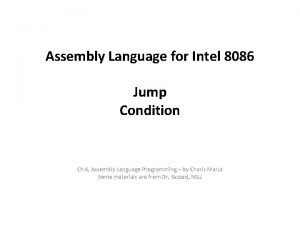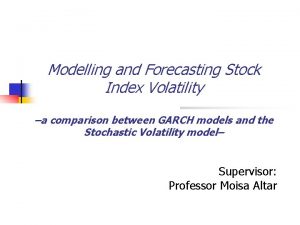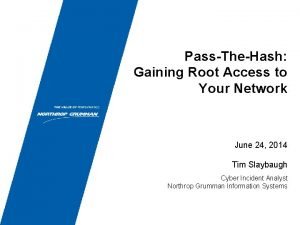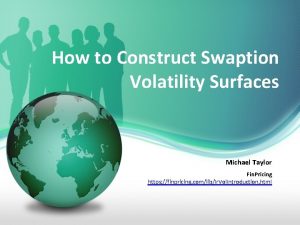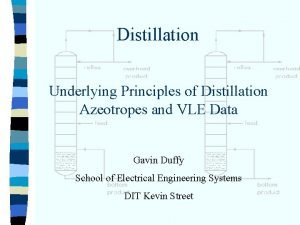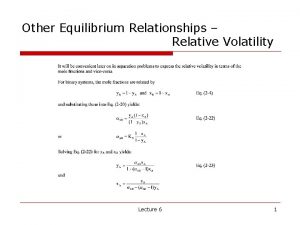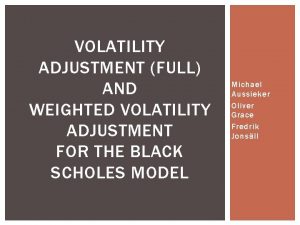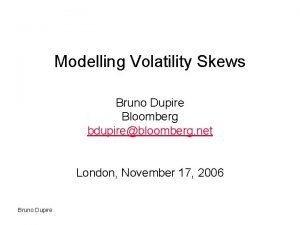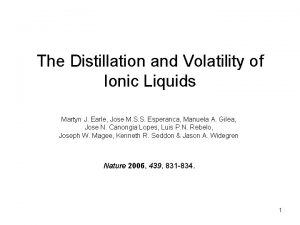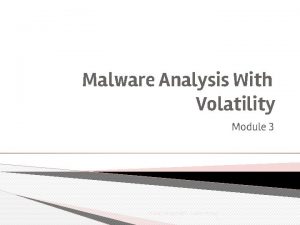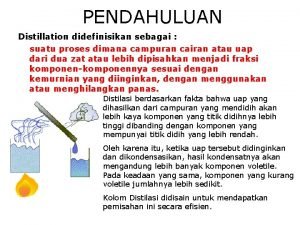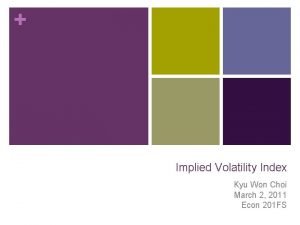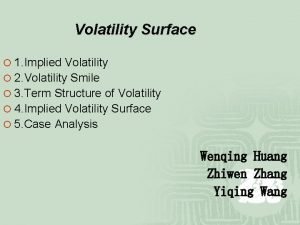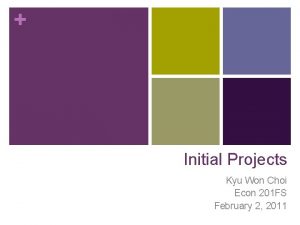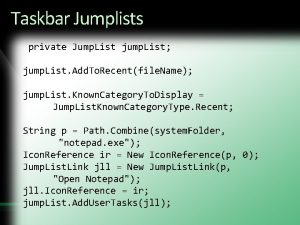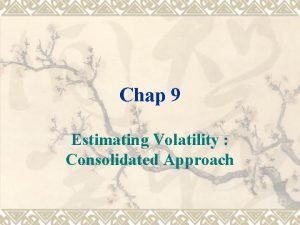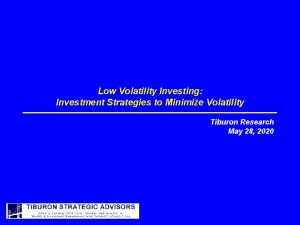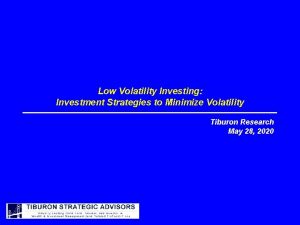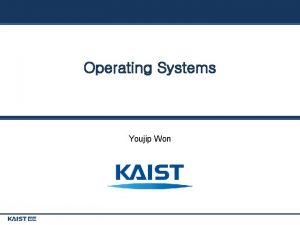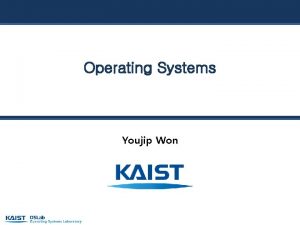Jump in Volatility Jump in Returns Kyu Won















- Slides: 15

+ Jump in Volatility & Jump in Returns Kyu Won Choi

+ Clearing up the Data (SP 500 & VIX) n Data cleared up n n n 5 -minutes from 9: 35 am to 15: 55 pm (77 price data per day) n S&P 500 price data at 16: 00 pm is absent Total 1233 days (94941 prices) from 9/22/2003 to 12/31/2008 2003 n 62 days from 9/22/2003 to 12/31/2003 n 225 days in Year 2004 n 236 days in Year 2005 n 242 days in Year 2006 n 233 days in Year 2007 n 235 days in Year 2008

+ n Outline Studied the jumps in the S&P 500 and VIX n Using Realized Correlation between squared jumps (Tauchen, Todorov 2010) n Using test statistics (Jacod and Todorov 2009) n Using simple jump detection method

+ Realized Correlation Measure n X = every 5 minutes S&P 500 index (per day) n Y = every 5 minute VIX (per day) n Rcj (calculated daily) closer to 1 if co-arrival of jumps in two processes over the given period. Because when common arrivals are present,

Frequency of Realized Correlation + ~0. 1 ~0. 2 ~0. 3 ~0. 4 ~0. 5 ~0. 6 ~0. 7 ~0. 8 ~0. 9 ~1. 0 Total 4 32 62 85 114 142 238 265 204 87 1233

+ Year by Year result Mean (Median) 2003 0. 5536 (0. 5520) 2004 0. 5782 (0. 6127) 2005 0. 5757 (0. 6144) 2006 0. 6527 (0. 6858) 2007 0. 7264 (0. 7525) 2008 0. 6886 (0. 7169) Total 0. 6401 (0. 6761)

+ Stacked Graph

Test statistics + n High frequency 10 minutes versus 5 minutes price data n If common arrival of jumps converges to 1. Otherwise, Tcj closer to 2. Because when common jumps are present, n Tcj calculated daily

+ Unexpected Result -A number of daily Tcj exceeds 2. 0 Mean (Median) 2003 2. 0941 (2. 0141) 2004 2. 0528 (1. 7971) 2005 1. 9872 (1. 7976 ) 2006 2. 0190 (1. 7942) 2007 2. 1147 (1. 7566) 2008 2. 1461(1. 9014 ) Total 2. 0318 (1. 8084)

+ Adjusted Result - Tcj that exceeds 2. 0 were removed. - Then about 2/5 Tcj were removed (maybe not Allowed to do this) Mean (Median) 2003 1. 0978 (0. 9893) 2004 1. 2958 (1. 3247) 2005 1. 2897 (1. 3352) 2006 1. 3029 (1. 3989) 2007 1. 3192 (1. 3400) 2008 1. 3802(1. 3925 ) Total 1. 2987 (1. 3051)

+ Simple Jump Detection Method n 90167 price data (5 minutes price data) n n Fixed Window n n n excluded first 4774 number of data (~ 5% of the data) Used the average jump size of the Year 2003 as standard Considered to be jump if it is greater than n 2 times the standardized size jump n 3 times the standardized size jump n 4 times the standardized size jump Rolling Window n As time passes, includes next 5 minute prices (and removed the previous one)

+ Fixed Window

+ Rolling Window

+ Consideration n Fixed Window Rolling Window Size 2 Times(3) 4 Times 2 Times 3 Times 4 Times SP 500 41844 41586 44202 44214 44146 VIX 48609 45285 45182 45065 Together 10275 10154 9960 9920 9814 Considered arriving two series of jump every 5 minutes n Is it too frequent? n Should consider only within the day? n Maybe the method to find the standardized size of jump is incorrect? n Then, from the standardized size of jump, use the squared root measure? (Instead of multiplying the constant)

+ Final Thoughts n Improve the measure for detecting the jumps n n What to do with the test statistics? Order of occurrences of jumps n Does one jump lead to another when not occurring at the same time? n Are jumps in volatility followed by jump in prices? n Or Jump in prices followed by volatility jumps?
 We're gonna jump jump jump in the river
We're gonna jump jump jump in the river Ichi ni san yon go roku nana hachi kyu jyu
Ichi ni san yon go roku nana hachi kyu jyu Judo worpen gele band
Judo worpen gele band Jnz 8086
Jnz 8086 Triage start
Triage start Volatility modeling
Volatility modeling Volatility psscan
Volatility psscan Mimikatz volatility
Mimikatz volatility Swaption volatility surface
Swaption volatility surface Relative volatility formula
Relative volatility formula Relative volatility
Relative volatility Volatility adjustment
Volatility adjustment Volatility skew
Volatility skew Volatility of ionic compounds
Volatility of ionic compounds Procdump volatility
Procdump volatility Types of distillation
Types of distillation



